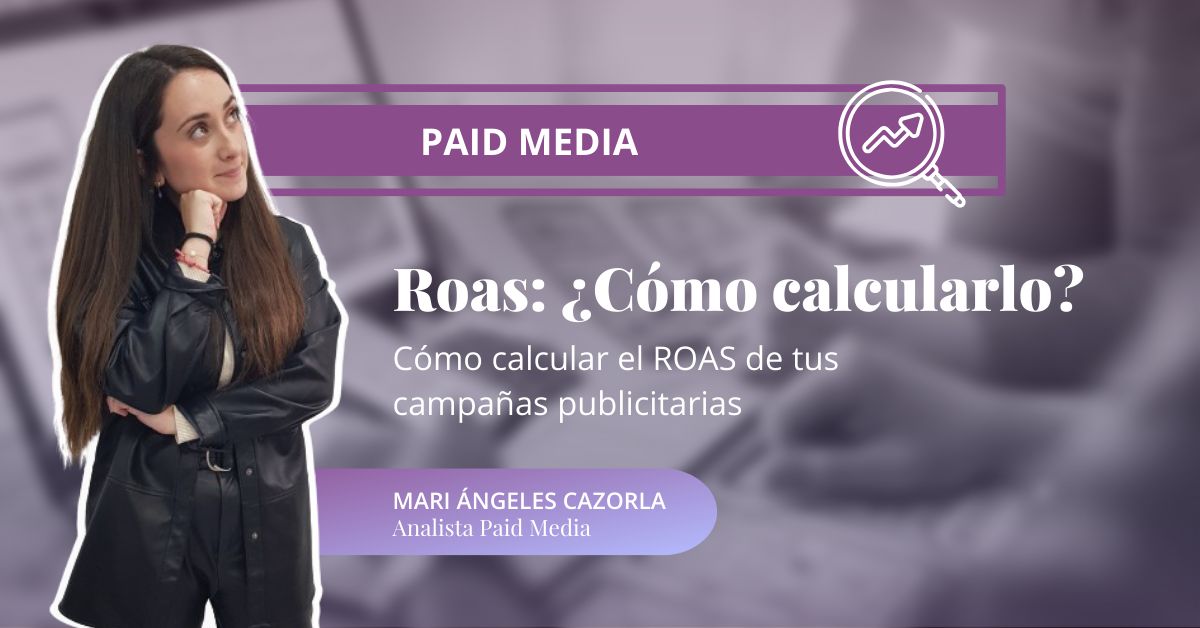ROAS is the acronym for Return On Advertising Spend, meaning return on advertising investment. Calculating ROAS is measuring the gross revenue generated by each euro spent on advertising, and it is essential to know the profitability of our investments in digital campaigns.
The formula is very simple: divide the revenue by the advertising investment, and if you want to know it as a percentage, multiply by 100.
ROAS = SALES REVENUE / ADVERTISING INVESTMENT x 100
Let’s take a simple example. In my first month of campaigns, I invested 300 € and the total value of my purchases was 1700 €. Dividing 1700 by 300, I get 5.66, meaning that for each euro invested, I am earning 5.66 €. We are getting a return of 566%.
To have a positive return, you need to have a ROAS of more than 1 or more than 100%. A lower ROAS indicates that our campaigns are not profitable. It is important to note that ROAS does not measure the profit margin of the sales; for that, we need to calculate ROI, which uses the same formula model but takes into account all expenses, not just the advertising investment.
[poll id=”13″]How do I measure the value of purchases?
To know how much revenue our advertising campaigns are generating, we need to track conversions and set them up in such a way that the value of each purchase is recorded.
For example, in Google Analytics, the enhanced eCommerce needs to be set up for this. In different advertising platforms like Google Ads or Facebook Ads, it is possible to set up tracking code to account for this value. This requires prior setup before starting to show ads.
It is also possible to calculate ROAS for campaigns that do not track sales. If your website generates different types of conversions (forms, email subscriptions, downloads, etc.), you can assign a fixed value to each type of action based on its importance. For example, a contact submission may have a value of 10 €, while a newsletter subscription may have a value of 5 €.
Why is it important to calculate ROAS?
It is not only essential to know the profitability of campaigns; ROAS is very useful for optimizing them. With this metric, we can know:
- Which campaigns give us the most profitability.
- Determine most sold products.
- Which channels are most effective at generating sales.
- How to better distribute our budget.
With this data, we will have clues on what to do to improve the profitability of campaigns while strategizing to improve the less effective ones.
Additionally, almost all advertising channels have algorithms that improve profitability through machine learning and various types of signals that advertisers do not always have access to. They also help optimize automatically so we can focus on strategy. For example, we can start campaigns optimizing for clicks, then switch to obtaining as many conversions as possible, and finally, focus on revenue.
Increasing ROAS is a constant optimization task, as it involves detailed analysis not only of campaigns but also of our products and website. It is important to consider other metrics such as the average value per purchase, the recurrence purchase rate, or the percentage of abandoned purchases (or carts) that occur, and design actions to improve these metrics.
- Do we want to increase the average shopping cart? Try applying upselling strategies.
- Are we looking to increase purchase recurrence? Let’s design a loyalty program for buyers.
- Is our cart abandonment rate too high? Let’s review the entire purchase process and try to simplify and incentivize it.
Need to set up tracking for your campaigns to measure ROAS? Or do you need to increase it? Contact us and we will provide a custom study.



